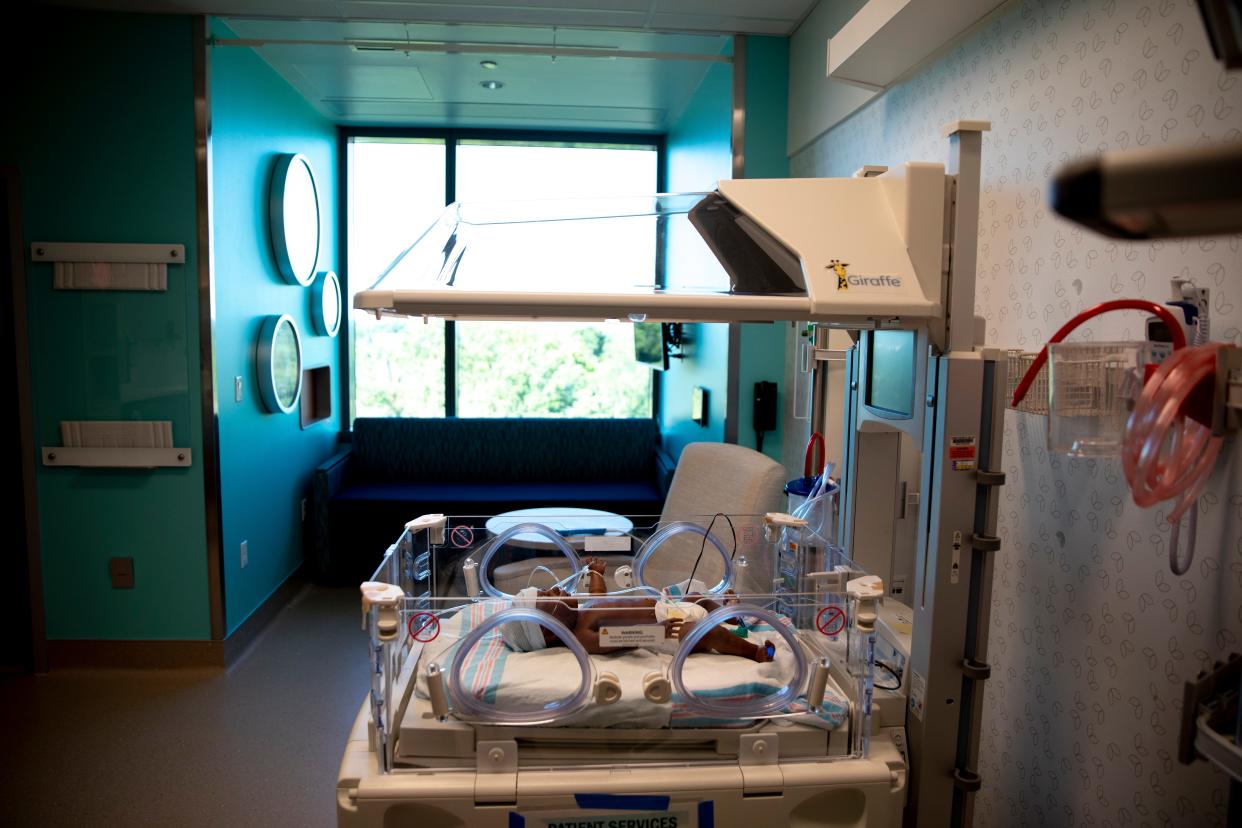Lighting technology developed at Cincinnati Children's aims to improve circadian rhythms

A lighting technology invented by developers at Cincinnati Children's Hospital Medical Center to influence eye development, circadian rhythms, and metabolism, has been licensed by California-based Bios and used in a new product, the company announced Thursday.
The violet light technology, which was developed over the past decade by Richard Lang, Cincinnati Children's director of the visual systems group and his team, optimizes light exposures to influence sleep and daytime wellness. It was used to develop a tunable lighting system installed in the neonatal intensive care unit at Cincinnati Children's recently opened Critical Care Building, the first full-spectrum system worldwide.
Over time, Lang and his colleagues worked to understand the role natural sunlight plays in fetal development, according to a news release, discovering along the way that the lights in the NICU could provide a full range of wavelengths found in natural sunlight and affect circadian rhythms.
Cincinnati Children's: Five things to know about $600 million tower that opened in 2021
Sleep: 15 reasons you’re not getting enough of it
Just let go: To get better sleep, put your phone to bed
“Our recent discoveries showed that violet light plays a crucial role in normal human physiology," Lang said in a prepared statement. "This prompted us to work with Bios lighting to deploy a new human-centric lighting technology in our neonatal intensive care unit. We believe everyone can benefit from human-centric lighting."
The same technology used to develop human-centric lighting in the NICU at the critical care building is now available for purchase in the form of Bios' SkyView Wellness Table Lamp, which uses a human-centric lighting system co-developed by the two systems to cycle through four different modes of lighting: sunrise, daytime, sunset, and nighttime.
“Bios is committed to creating human-centric lighting designed to promote health and wellbeing," said Robert Soler, Bios' vice president of biological research and technology. "When the opportunity arose, we were excited to work with Cincinnati Children’s and co-develop new human-centric lighting technology. We now offer this technology in our SkyView Wellness Table Lamp.”
Bios and Cincinnati Children's came to a licensing agreement after the completion of a clinical study on the health effects of the company's wellness table lamp. Under the agreement, Bios has exclusive access to the violet light technology. Financial terms of the licensing agreement were not disclosed.
This article originally appeared on Cincinnati Enquirer: Circadian rhythms: Cincinnati Children's lighting technology licensed

